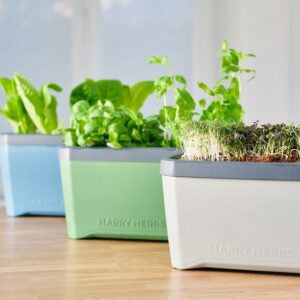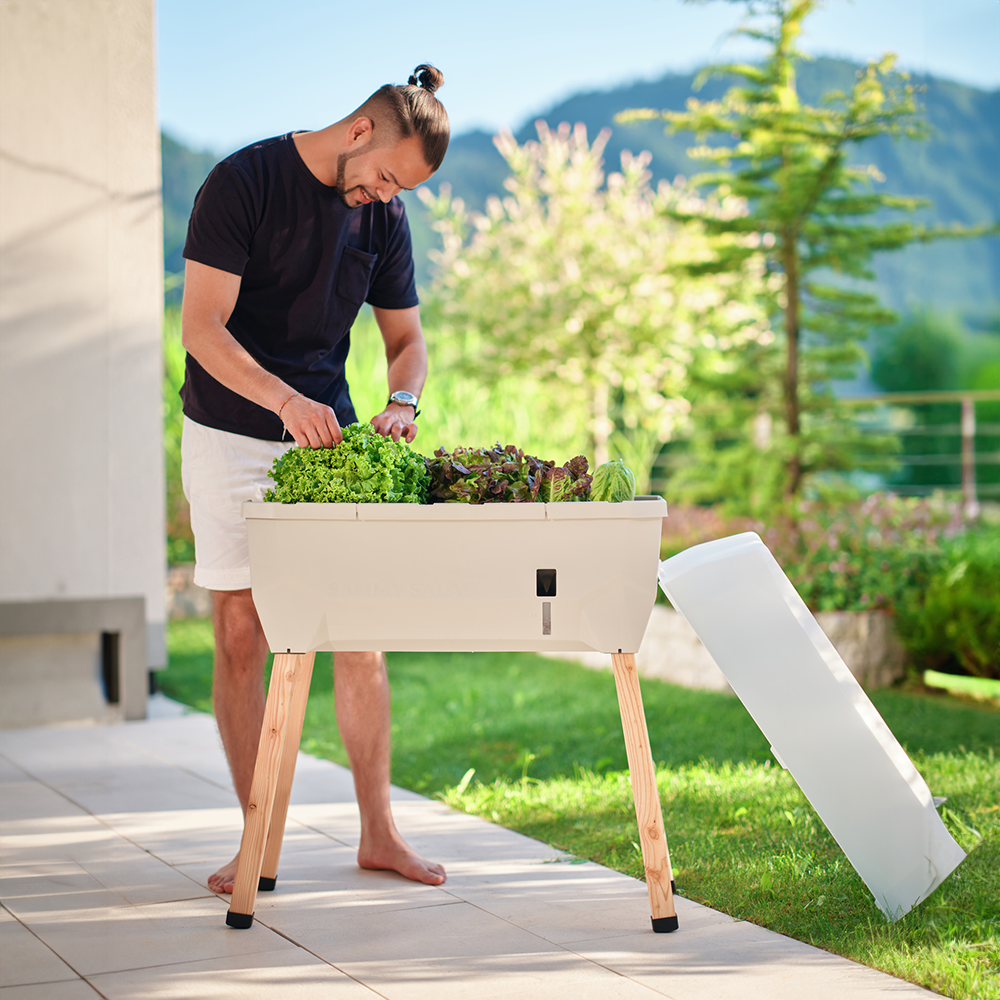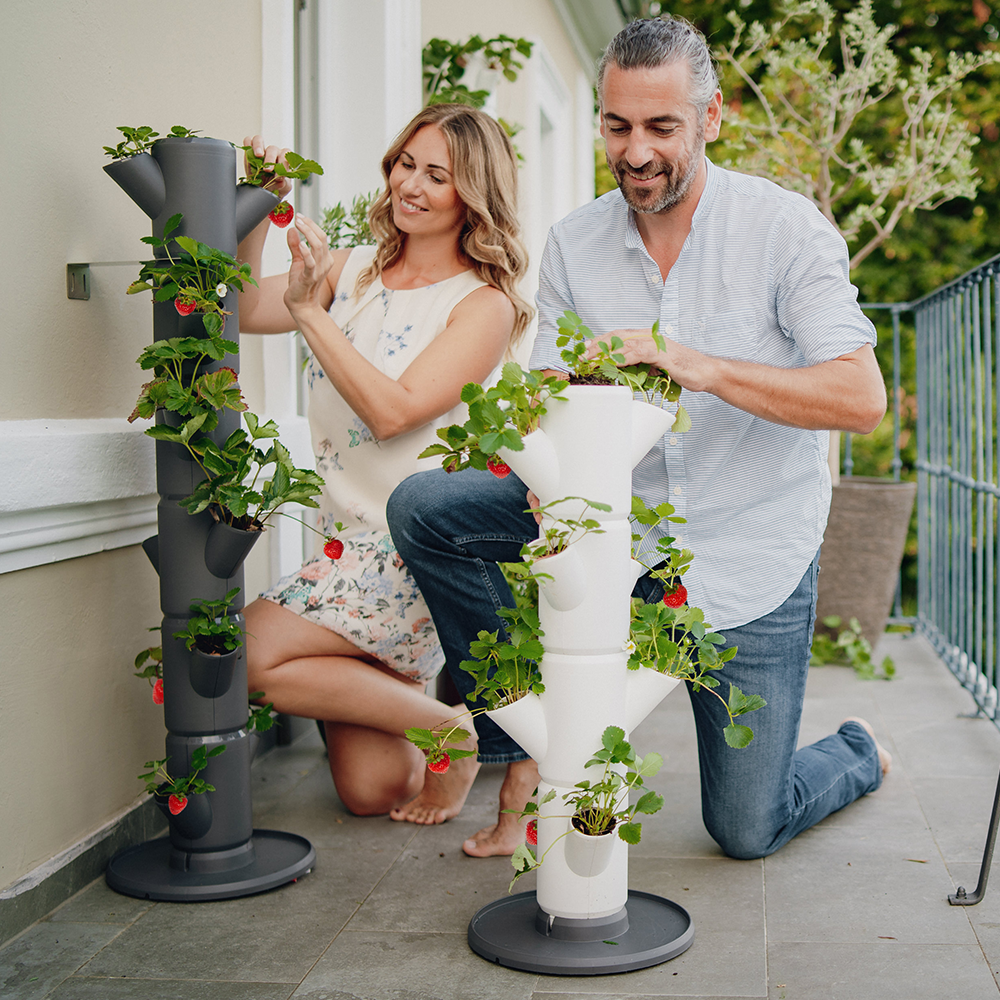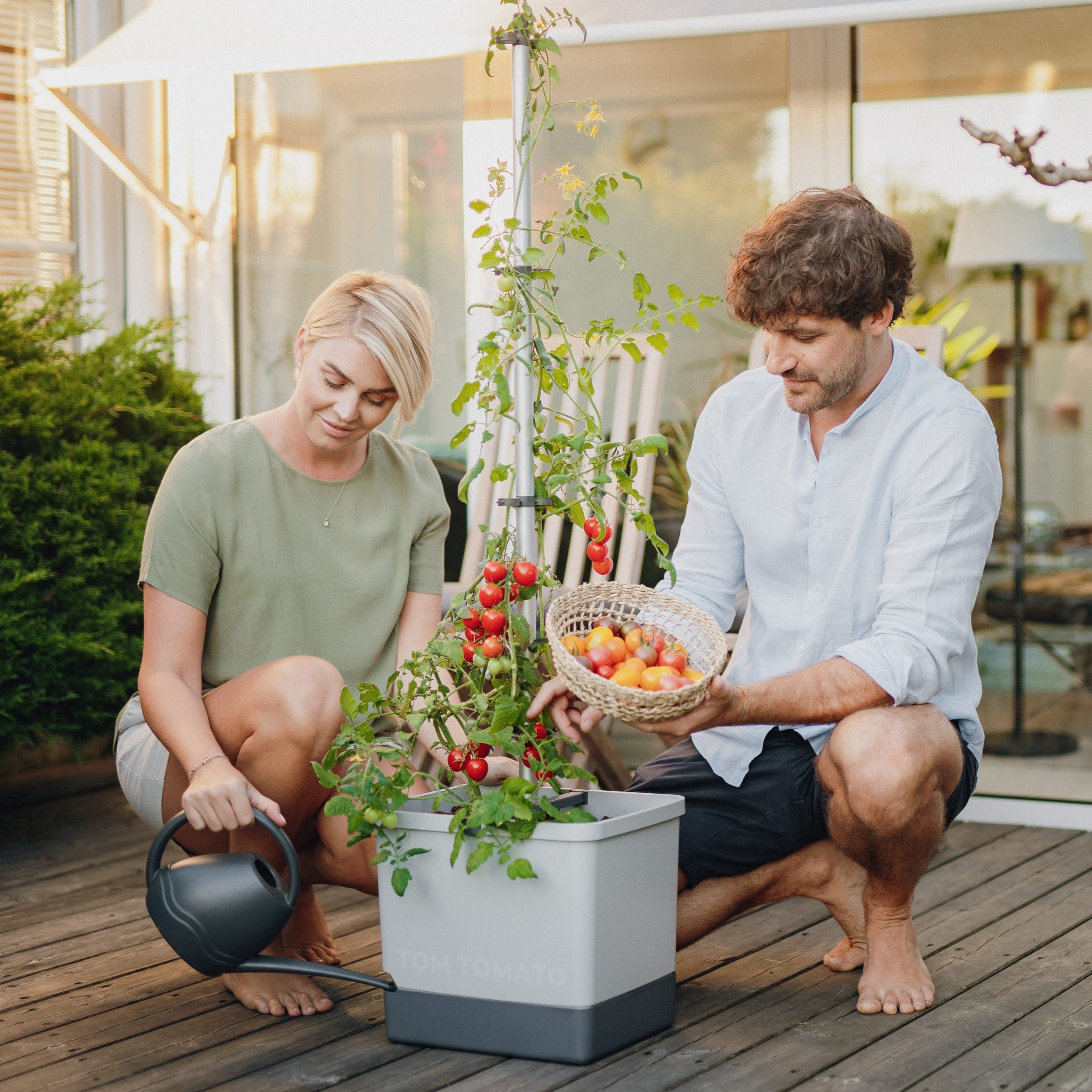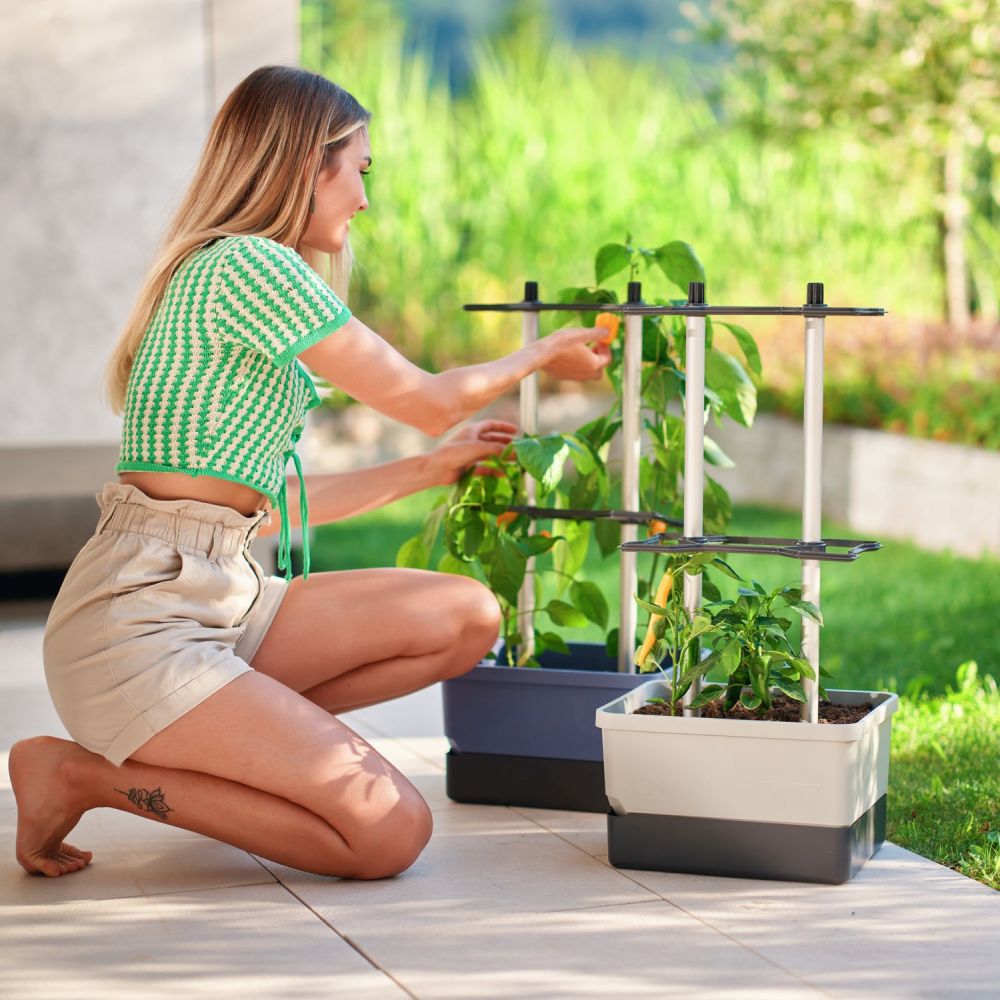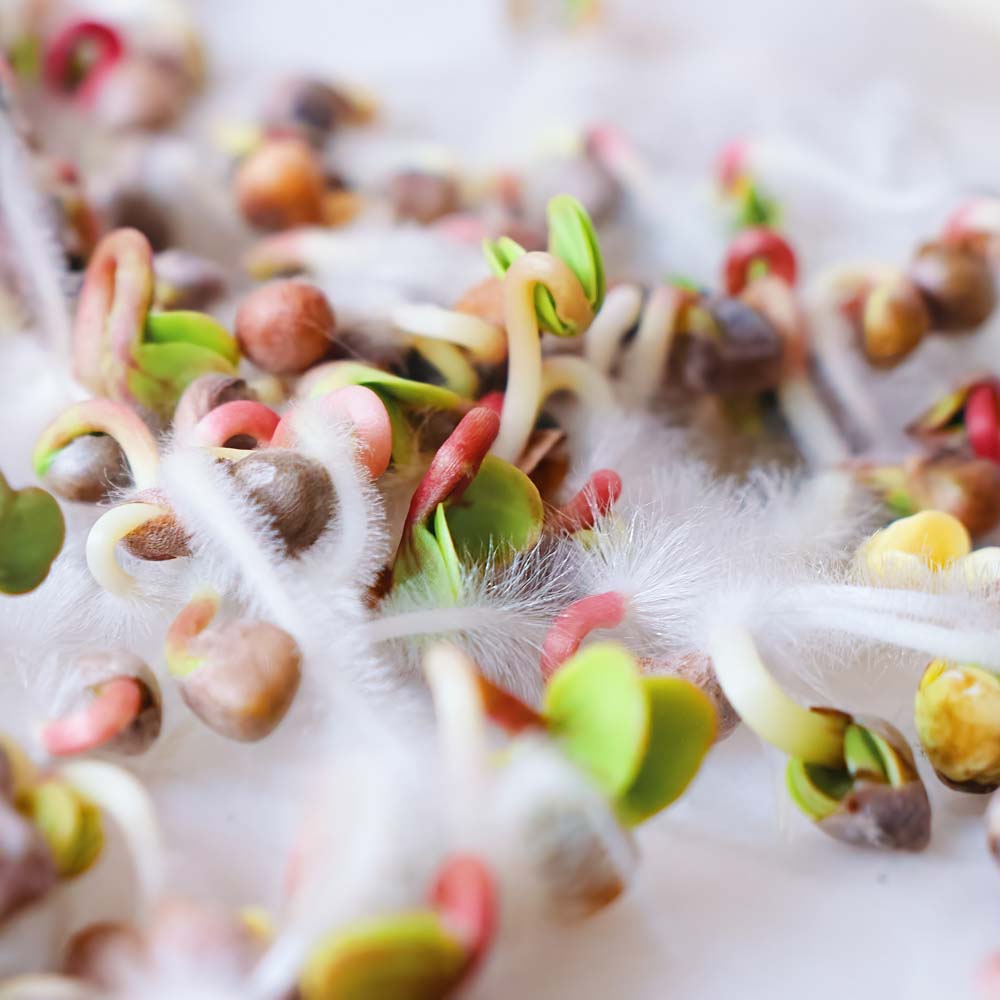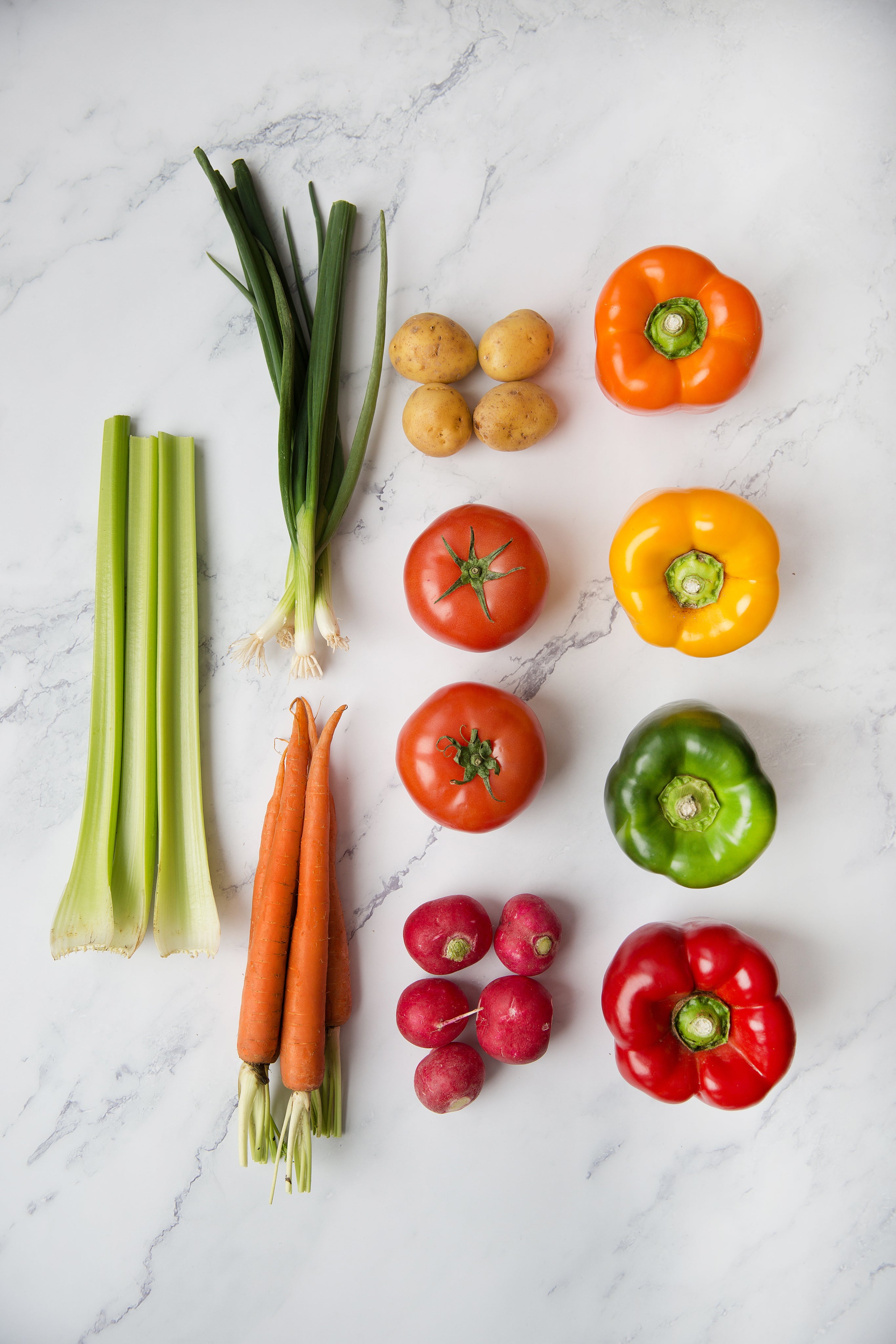Having planted your first microgreen seeds in your HARRY HERBS, you will likely be eagerly watching their growth in the first few days. Depending on the variety, the first tiny seedlings can often appear overnight. However, a few days later, the initial excitement may be followed by a shock as a white, furry fuzz appears on the seedlings. Are my microgreens molding?
In short: it is highly unlikely. The chance of your seedlings developing mold after only a few days is extremely low. By removing the cover of your HARRY HERBS once a day and wiping away any condensation that may have formed, you can further minimize the risk. What you are most likely seeing on your microgreens are called micro-roots or root hairs. In summary, micro-roots are an important component of your microgreens and help to promote healthy growth and abundant harvests.
They are more common in some varieties, such as radish and red cabbage. Root hairs are found on very young, growing roots. They serve to increase the surface area of the root and improve soil penetration, so they are a natural part of the growth process of your microgreens.
Gusta Garden hint
If you are still unsure about what is growing on your seedlings, we have two tips for you:
- Mold grows ON a plant, while root hairs are a part of it. If you can easily wipe away the fuzz or it comes off easily, then it is indeed mold. If you tug on the root hairs, the whole plant will move.
- If you are still unsure, simply perform the smell test. Moldy seedlings will have a musty and damp smell in the growth tray, while healthy plants will have a fresh and airy scent.
Visual comparison
Here you can compare your microgreens with our pictures of mold and micro-roots:
Appropriate products
-
Sale!
 HARRY HERBS
HARRY HERBS
Microgreens refill set
€5,99 – €109,99 inkl. MwSt. Select options -
Sale!
 HARRY HERBS
HARRY HERBS
HARRY HERBS grow mat 10 pcs.
€9,99 – €34,99 inkl. MwSt. Select options -
 HARRY HERBS
HARRY HERBS
Wall mount
€9,90 inkl. MwSt. Add to cart -
 HARRY HERBS
HARRY HERBS
HARRY HERBS
€39,90 – €49,90 inkl. MwSt. Select options
